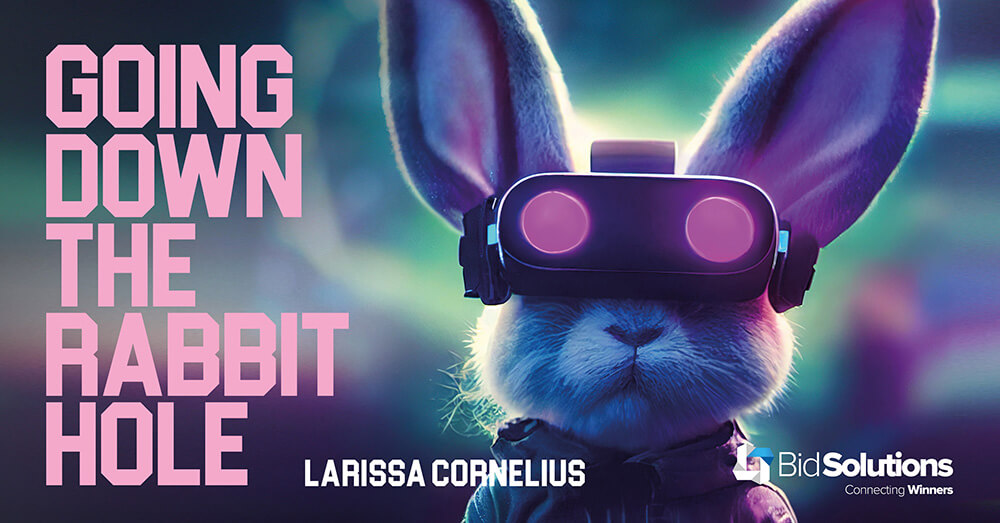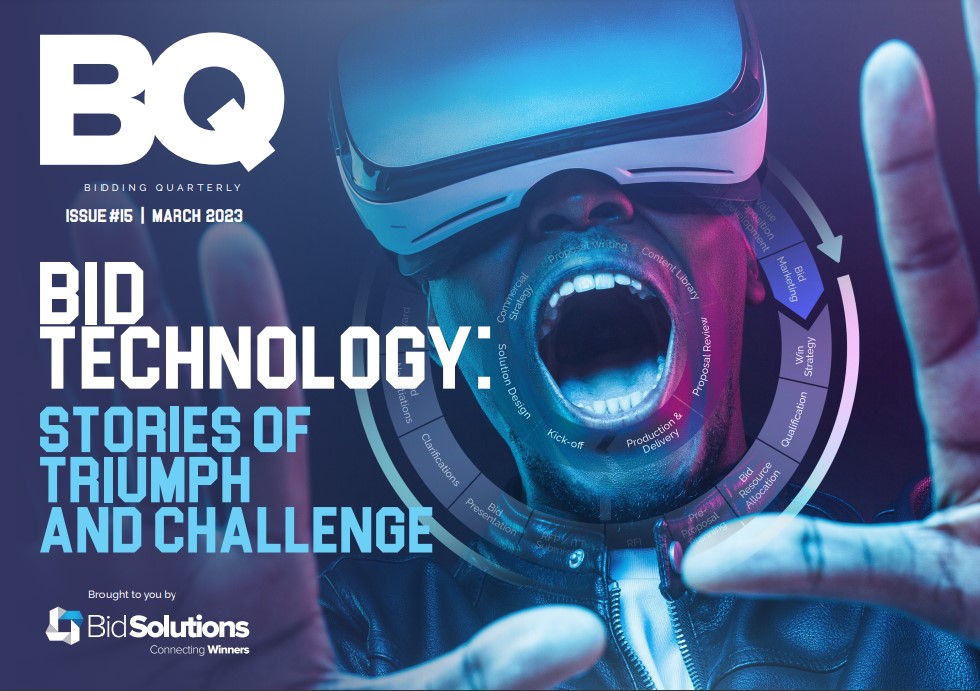
“Every adventure requires a first step.” Lewis Carroll, Alice in Wonderland
The world of proposals is changing, and the proposal profession is being forced to adapt. AI (artificial intelligence) is already having a huge impact. It’s affecting the way people write and communicate, which in turn affects how proposals are written.
AI is all around us. No matter how much it scares us, we need to understand what it is, how it works, and its potential impact on our industry and our job security. This article will explore how AI is changing the proposal profession and what it means for you as a professional in this industry.
The advancement of technology is amazing and frightening. I have always considered myself a quick learner, but I need help to keep up. Luckily, this is where AI steps in. I wrote the following questions. The answers were generated by Copy.ai.
What is AI?
AI stands for artificial intelligence, which means that it uses computers to mimic the thinking of humans. AI can help businesses, from large corporations to small start-ups, by automating specific tasks and processes. For example, smart machines can help make proposals more efficient.
How will AI change the proposal profession?
AI will impact the proposal profession in many ways and knowing how this technology can help you succeed is important.
AI has already made its mark on the proposal industry in several ways.
To begin with, there’s been a shift away from human-generated proposals toward machine-generated ones—and this trend will only continue as AI becomes more sophisticated. Using bots will make it easier for companies to create compelling proposals at scale and lower costs as they do so.
In addition, AI allows organisations to make better use of their data. For example, suppose you’re looking for information about your competitors’ marketing campaigns or customer service teams. In that case, you can ask an AI bot to find it for you instead of spending hours combing through spreadsheets or web pages. And this data can be used in all sorts of ways: to identify opportunities for improving current processes; create new products and services; execute those ideas; and much more!
Finally, AI will help improve collaboration among teams working on proposals, which means faster turnaround times and better results overall.
However, there are also challenges associated with using AI in business processes like proposals.
What are the pitfalls of AI in the proposal profession?
The short answer is: it depends.
AI isn’t a panacea, and it’s not a cure-all. But it can be an incredibly powerful tool in the hands of a skilled professional. But there are some downsides to using AI for proposals, and businesses need to know what they are before they jump into this new technology.
For instance, there’s no getting around the fact that AI is still relatively new. While many applications have been developed for AI use, none have been around very long. This means there’s no telling how long they’ll last or what might happen if you switch platforms or providers later down the road (and trust me: you will).
Another thing to consider is that while AI can help you with many aspects of your proposal process—from gathering data and information to writing content—it doesn’t know everything yet. Some experts say it may never be able to do so because there are so many ways people think about things and interact with them every day. So, while it might seem like an easy way out at first glance, don’t be surprised if you need human intervention.
What are the current top five AI tools on the market:
- The Watson system is a natural-language processing tool that can analyse data and make predictions.
- The Microsoft Bot Framework, which can perform tasks like scheduling meetings and sending emails.
- The Salesforce Einstein Platform can help salespeople make better decisions about customer needs and wants by analysing data from social media posts and other sources.
- The Google Duplex system can conduct phone calls with humanlike responses based on artificial intelligence (AI) technology and machine learning algorithms that enable it to understand what’s being said in a conversation.
- The Amazon Alexa voice assistant helps users control connected devices using voice commands instead of touch screens, keyboards, or buttons on a smartphone or tablet device.
If you want to know more from Copy.ai, I suggest you log onto an AI tool and “go down the rabbit hole”.
THE HUMAN PERSPECTIVE (OR IS IT?)
“I can’t go back to yesterday because I was a different person then.” Lewis Carroll, Alice in Wonderland
Here is my personal perspective on how AI will change the game: it’s going to make you obsolete! Wait…did I say that out loud? But seriously: AI is already making it easier for people to create better proposals faster than ever. So if you’re not using AI in your business, you are missing some serious competitive advantages and probably losing money too!
Our team already uses:
- Microsoft Teams (and various other apps) that annotate minutes, teach you to communicate better, schedule and collaborate
- Canva for design (which now has AI built-in)
- Loopio for proposal automation
- Copy.ai for content ideation
- Visible Thread for better readability, compliance checks, instant compliance matrices, and document comparisons
In this new world of proposal writing automation, we need to consider using AI tools to handle all the heavy lifting (with human help) while focusing on what matters: strategic thinking and client relationship building. There is a Wonderland of tools out there. We now need to figure out how best to make them work for us.
This article was written by Larissa Cornelius.
With over 12 years in business development and proposal consultancy, Larissa offers bid expertise across various industries. She has trained thousands of people and worked with over 260 companies on strategic bid work. She has a further seven years of operational management expertise and actively promotes the proposal profession by combining proposal best practices with her operational and sales background, helping businesses win more.

